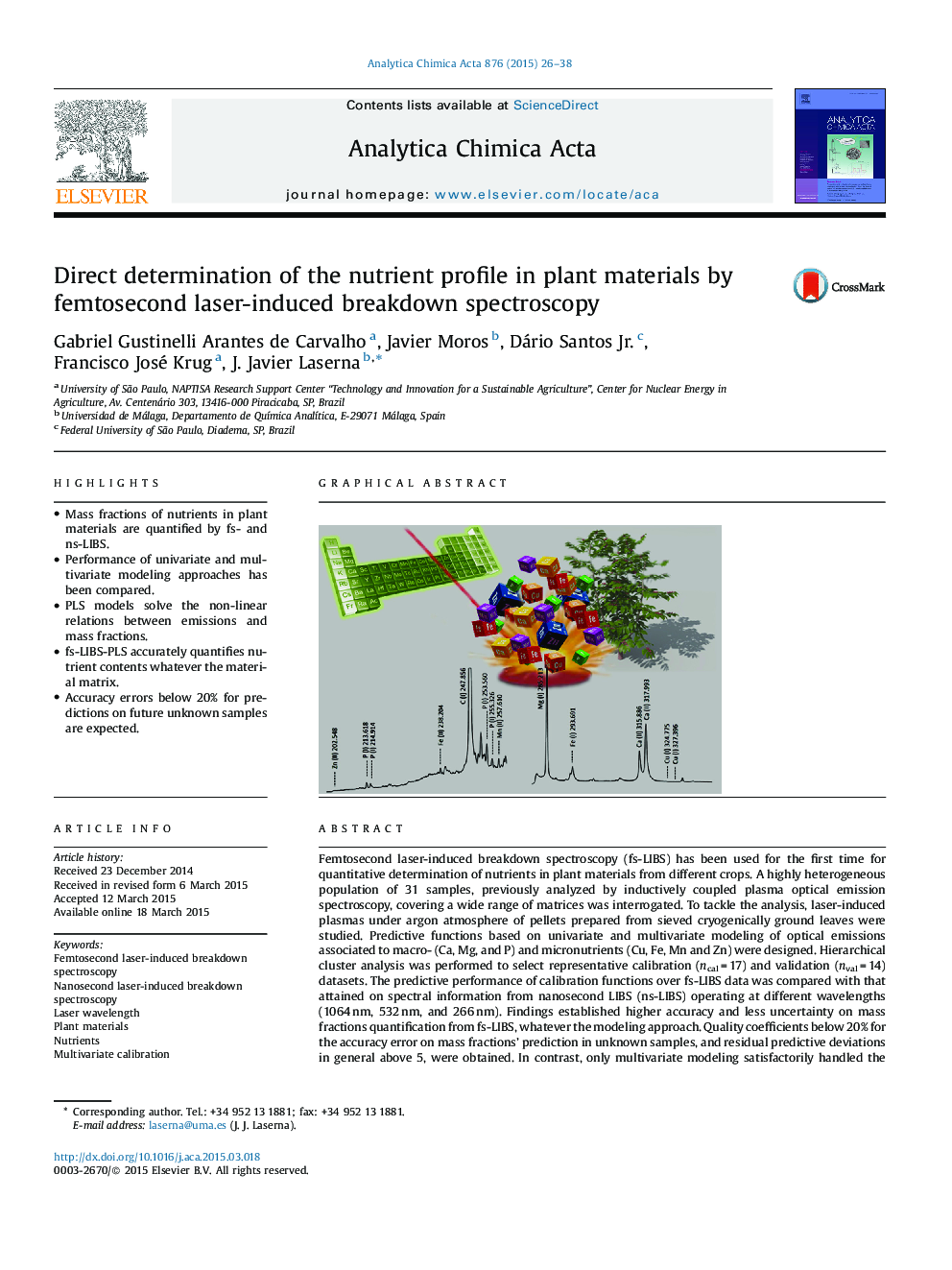| Article ID | Journal | Published Year | Pages | File Type |
|---|---|---|---|---|
| 1163767 | Analytica Chimica Acta | 2015 | 13 Pages |
•Mass fractions of nutrients in plant materials are quantified by fs- and ns-LIBS.•Performance of univariate and multivariate modeling approaches has been compared.•PLS models solve the non-linear relations between emissions and mass fractions.•fs-LIBS-PLS accurately quantifies nutrient contents whatever the material matrix.•Accuracy errors below 20% for predictions on future unknown samples are expected.
Femtosecond laser-induced breakdown spectroscopy (fs-LIBS) has been used for the first time for quantitative determination of nutrients in plant materials from different crops. A highly heterogeneous population of 31 samples, previously analyzed by inductively coupled plasma optical emission spectroscopy, covering a wide range of matrices was interrogated. To tackle the analysis, laser-induced plasmas under argon atmosphere of pellets prepared from sieved cryogenically ground leaves were studied. Predictive functions based on univariate and multivariate modeling of optical emissions associated to macro- (Ca, Mg, and P) and micronutrients (Cu, Fe, Mn and Zn) were designed. Hierarchical cluster analysis was performed to select representative calibration (ncal = 17) and validation (nval = 14) datasets. The predictive performance of calibration functions over fs-LIBS data was compared with that attained on spectral information from nanosecond LIBS (ns-LIBS) operating at different wavelengths (1064 nm, 532 nm, and 266 nm). Findings established higher accuracy and less uncertainty on mass fractions quantification from fs-LIBS, whatever the modeling approach. Quality coefficients below 20% for the accuracy error on mass fractions’ prediction in unknown samples, and residual predictive deviations in general above 5, were obtained. In contrast, only multivariate modeling satisfactorily handled the non-linear variations of emissions in ns-LIBS, leading to 2-fold decrease in the root mean square error of prediction (RMSEP) of Ca, Mg, P, Cu, Fe, Mn and Zn in comparison with the univariate approach. But still, an averaged quality coefficient about 35% and residual predictive deviations below 3 were found. Similar predictive capabilities were observed when changing the laser wavelength. Although predicted values by ns-LIBS multivariate modeling exhibit better agreement with reference mass fractions as compared to univariate functions, fs-LIBS conducts better quantification of nutrients in plant materials since it is less dependent on the chemical composition of the matrices.
Graphical abstractFigure optionsDownload full-size imageDownload as PowerPoint slide
